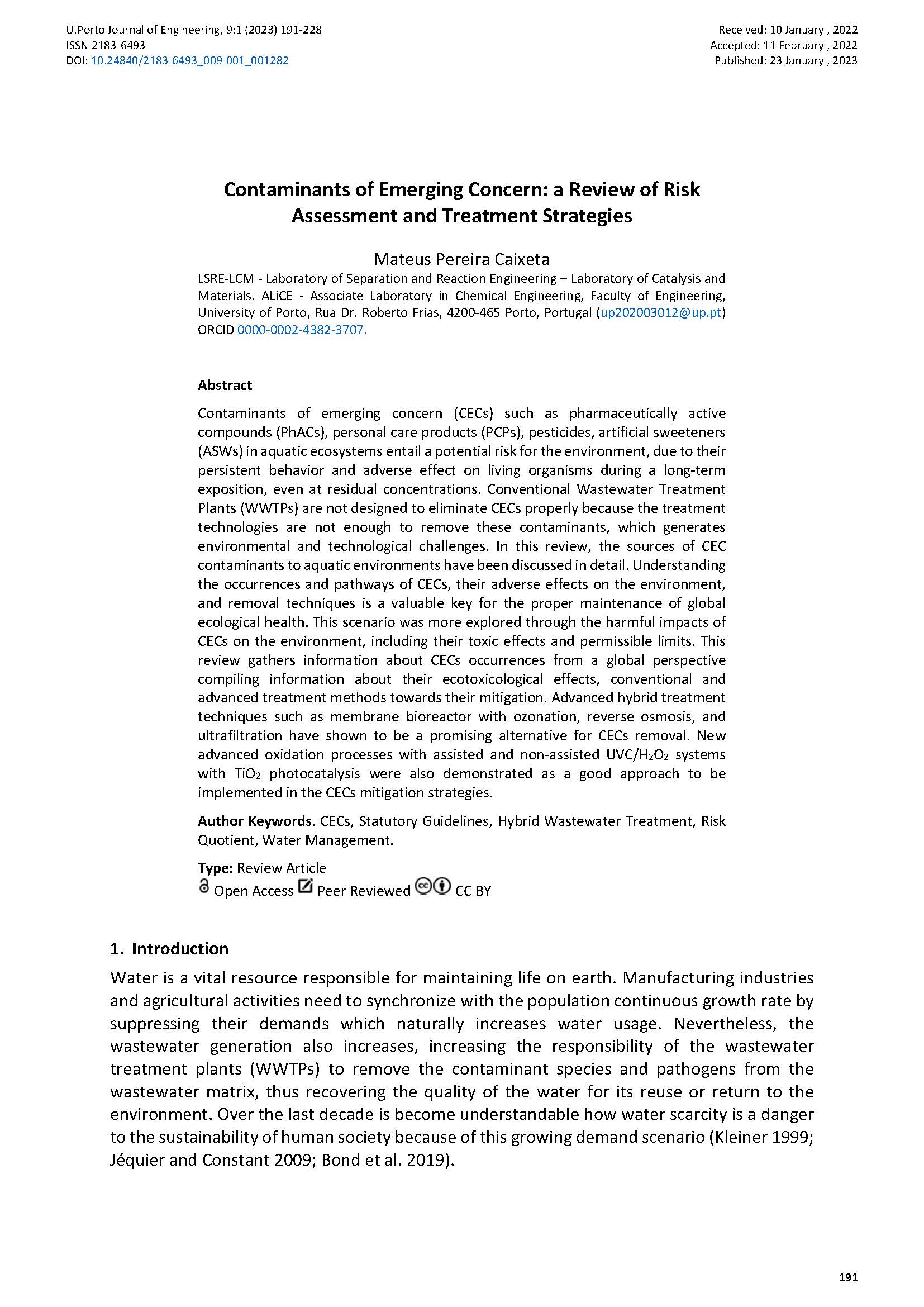Contaminants of Emerging Concern a Review of Risk Assessment and Treatment Strategies
Main Article Content
Abstract
Contaminants of emergent concern (CECs) in aquatic ecosystems entail a potential risk for the environment, due to their persistent behavior and adverse effect on living organisms during a long-term exposition, even at residual concentrations. Conventional Wastewater Treatment Plants (WWTPs) are not designed to eliminate CECs properly because the treatment technologies are not enough to remove these contaminants, which generates environmental and technological challenges. In this review, the sources of CEC contaminants to aquatic environments have been discussed in detail. Understanding the occurrences and pathways of CECs, their adverse effects on the environment, and removal techniques is a valuable key for the proper maintenance of global ecological health. This scenario was more explored through the harmful impacts of CECs on the environment, including their toxic effects and permissible limits. This review gathers information about CECs occurrences from a global perspective compiling information about their ecotoxicological effects, conventional and advanced treatment methods towards their mitigation. Advanced hybrid treatment techniques such as membrane bioreactor with ozonation, reverse osmosis, and ultrafiltration have shown to be a promising alternative for CECs removal. New advanced oxidation processes with assisted and non-assisted UVC/H2O2 systems with TiO2 photocatalysis were also demonstrated as a good approach to be implemented in the CECs mitigation strategies.
Downloads
Article Details

This work is licensed under a Creative Commons Attribution 4.0 International License.
Authors who publish with this journal agree to the following terms:
- Authors retain copyright and grant the journal right of first publication with the work simultaneously licensed under a Creative Commons Attribution License that allows others to share the work with an acknowledgement of the work's authorship and initial publication in this journal.
- Authors grant the journal the rights to provide the article in all forms and media so the article can be used on the latest technology even after publication and ensure its long-term preservation.
- Authors are able to enter into separate, additional contractual arrangements for the non-exclusive distribution of the journal's published version of the work (e.g., post it to an institutional repository or publish it in a book), with an acknowledgement of its initial publication in this journal.
- Authors are permitted and encouraged to post their work online (e.g., in institutional repositories or on their website) prior to and during the submission process, as it can lead to productive exchanges, as well as earlier and greater citation of published work (See The Effect of Open Access).

